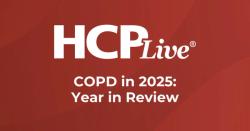
OR WAIT null SECS
Brain-Gut Behavioral Treatments May Ease IBS Abdominal Pain, Needs More Research
Brain-gut behavioral treatments, such as CBT and hypnotherapy, may alleviate abdominal pain in IBS, though no single therapy proves superior to others.
A new study indicated brain-gut behavioral treatments, such as self-guided or minimal contact cognitive behavioral therapy (CBT), face-to-face multicomponent behavioral therapy, and face-to-face gut-directed hypnotherapy, may be effective for easing abdominal pain in irritable bowel syndrome (IBS).1
“…no single [brain-gut behavioral treatment] was significantly more efficacious than any other active therapy, although it is uncertain whether this is due to insufficient numbers of trials, comparable outcomes, or other factors,” wrote investigators, led by Vivek C. Goodoory, PhD candidate, from Leeds Gastroenterology Institute at Leeds Teaching Hospitals National Health Service Trust in the United Kingdom.
Brain-gut behavioral treatments improve global symptoms in IBS, and although the United States management guidelines suggest their use also relieves persistent abdominal pain, this has not been assessed systematically.2 Investigators conducted a network meta-analysis to assess the specific effect brain-gut behavioral treatments have on abdominal pain.1
The team searched MEDLINE (January 1, 1947, to December 16, 2023), EMBASE, EMBASE Classic (January 1, 1947, to December 16, 2023), PsychINFO (January 1, 1806, to December 16, 2023), and the Cochrane Central Register of Controlled Trials for randomized controlled trials (RCTs) assessing the efficacy of brain-gut behavioral treatments for adults with IBS. The studies either compared other brain-gut behavioral treatments or a control intervention, as well as provided an assessment of abdominal pain resolution or improvement.
The study included 42 trials, totaling 5220 participants. The brain-gut behavioral treatment that had the largest number of trials and participants, as well as evidence for improving abdominal pain, was the self-guided/minimal contact cognitive behavioral therapy (RR, 0.71; 95% confidence interval [CI], 0.54 – 0.95; P = .58), followed by face-to-face multicomponent behavioral therapy (RR, 0.72; 95% CI, 0.54 – 0.97; P = .56), and face-to-face gut-directed hypnotherapy (RR, 0.77; 95% CI, 0.61 – 0.96; P = .49).
Out of all the evaluated brain-gut behavioral treatments, digital gut-directed hypnotherapy ranked the best at alleviating abdominal pain, even though the relative risk remained the same (relative risk [RR], 0.19; CI, 0.09 – 0.43; P = .99). This finding was based on only 1 trial with 188 patients randomized to an active therapy. Digital relaxation therapy or training had similar results (RR, 0.22; 95% CI, 0.11 – 0.44; P = .97), based on 2 trials with 230 patients on active therapy.
Patients on face-to-face stress management (RR, 0.52; 95% CI, 0.29 – 0.95; P = .79), mindfulness meditation training (RR, 0.55; 95% CI, 0.31 – 0.99; P = .75), and group CBT (RR, 0.61; 95% CI, 0.40 – 0.92; P = .72) received more improvement on abdominal pain than those on waiting list control. However, these results were based on 2 trials containing 31 patients, 1 RCT containing 36 patients, and 3 trials containing 80 patients receiving active therapy, respectively. On indirect comparison, no gut-behavioral treatment was better than any of other active therapies.
Among control interventions, waiting list control (P = .14) was more effective than dietary or lifestyle advice (P = .12).
In the trials that only recruited patients with refractory global IBS symptoms, group CBT was more effective than routine care for abdominal pain (RR, 0.59; 95% CI, 0.36 – 0.98). However, none of the other brain-gut managements were significantly more effective than any other active or control treatments.
“…there was little evidence for benefit for abdominal pain in patients whose global IBS symptoms are judged as being refractory to medical treatment,” investigators wrote. “This suggests restricting their use to patients with persistent abdominal pain may be inappropriate.”
Investigators said the findings were limited by possible publication bias. Also, many trials did not have the power to report an effect on abdominal pain in IBS.
“…Factors beyond efficacy, including rapidity of response, cost-effectiveness, accessibility, durability, time scale, safety profile, and breadth and scope of treatment gains, including improvement in quality of life and abdominal pain, may inform treatment selection to deliver optimal responses,” investigators wrote. “All of this will assist in informing future management guidelines for IBS.”
References
- Goodoory VC, Khasawneh M, Thakur ER, et al. Effect of Brain-Gut Behavioral Treatments on Abdominal Pain in Irritable Bowel Syndrome: Systematic Review and Network Meta-Analysis. Gastroenterology. 2024;167(5):934-943.e5. doi:10.1053/j.gastro.2024.05.010
- Chang L, Sultan S, Lembo A, Verne GN, Smalley W, Heidelbaugh JJ. AGA Clinical Practice Guideline on the Pharmacological Management of Irritable Bowel Syndrome With Constipation. Gastroenterology. 2022;163(1):118-136. doi:10.1053/j.gastro.2022.04.016


